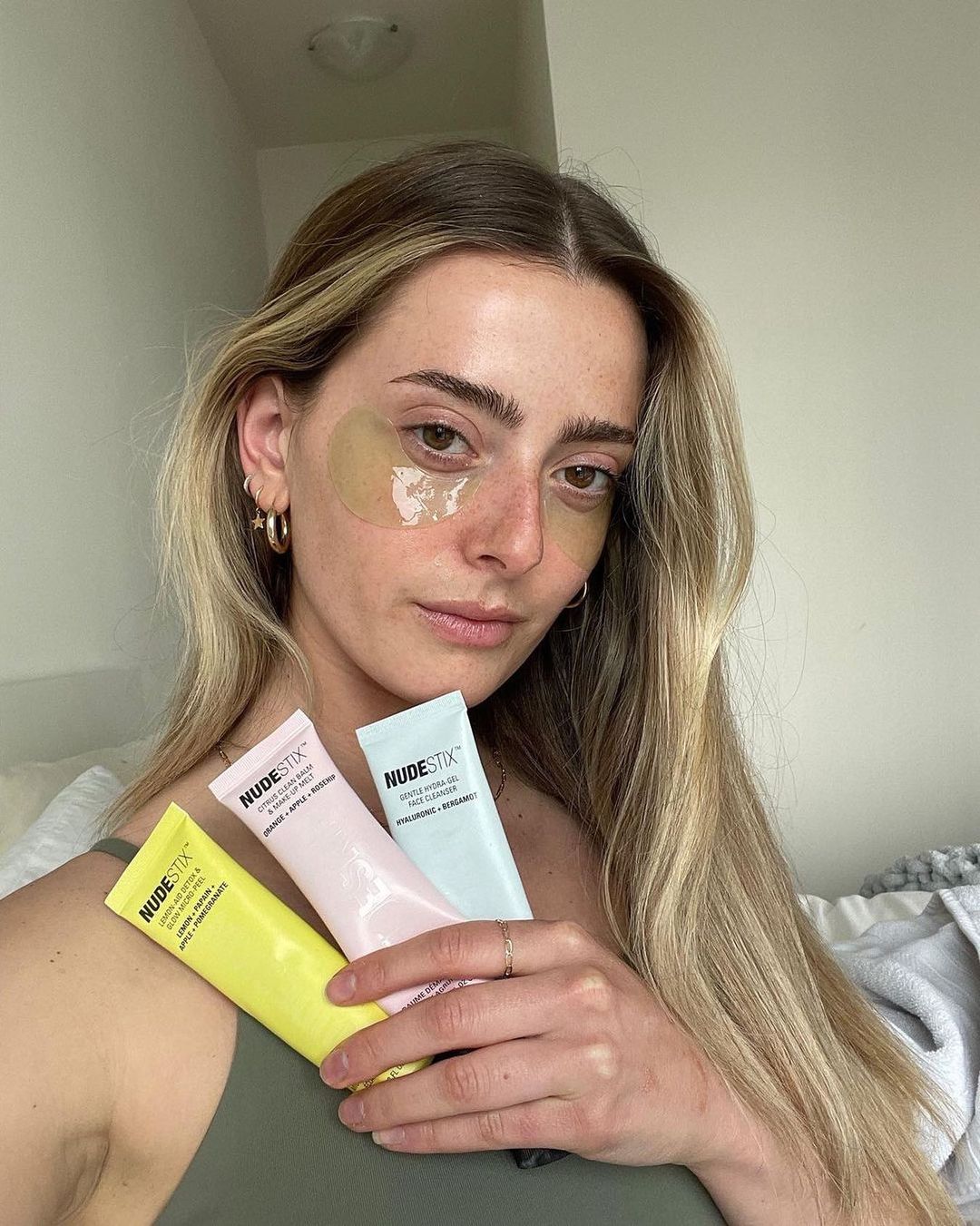4 Ways to Make Your Beauty Routine More Sustainable
When it comes to being sustainable, there's probably no industry more confusing than cosmetics. With the plethora of brands, products, and price points, it can be overwhelming to figure out how to make — or keep — your routine green.
But Taylor Frankel has a few ideas.
The co-founder and chief brand officer of Nudestix, a Canadian-born clean beauty brand with eco-friendly packaging and products, knows a thing or two about how to do more with less — especially when it comes to cosmetics.
When she co-founded the brand in 2013 with her mother and sister, the Toronto native set out to offer sustainable, cruelty-free, and vegan options to the public. The offering has since then expanded to skincare, pleasing makeup and self-care enthusiasts alike with clean alternatives to their beloved products.
We spoke to Taylor about how she greened
up her personal beauty routine for the sake of the planet. Check out her tips below — and make sure to enter the Global Citizen Reward available here for a chance to earn a Nudestix beauty bundle for yourself.

1. Reduce your consumption.
Frankel's main advice is to slow down and be mindful of your purchases.
In an era of elaborate skincare routines involving dozens of steps, she suggests limiting your selection to a few essentials. The reason? Curbing excess can not only help reduce the amount of packaging and water going into your routine, but it'll also help you be more mindful of what you choose.
Try identifying what you really need in your routine,
Frankel recommends.
At the end of the day, a marketer's job is to sell products. But what I love about Nudestix is our skincare and also this whole minimalist approach to beauty is that we speak to the fact that you don't need more,
she adds. You actually can do less, simplify, and reduce the consumption of your product.
Frankel's routine involves using four products from Nudestix's sister brand, Nudeskin. She opts for the line's cleanser, enzymatic peel, toner, and mask to curb breakouts.
2. Rethink one-time product use.
Once you've reduced your selection of products, Frankel suggests rethinking how you use them. Single-use products, like cotton pads and cotton balls, can add to the waste you're generating. Limiting single-use items has always been important to Nudestix. In fact, the iconic black tin in which most of its products are packaged is made of tinplate, an infinitely recyclable material. So whether you choose to send it back to the brand as part of the Save-a-Tin recycling program, or choose to keep it, its uses are neverending. It can store headphones, lip balms, tweezers, gum — anything you need on the go.
Frankel says that the logic behind this choice is relatively simple.
We did that because of the amount of waste that you consume just with cotton pads. If you think about your routine, maybe you're using it for toner, cleanser, or removing makeup — that's a lot of product,
she says.
The argument is even stronger once you consider the enormous impact of cotton production on wildlife, rivers, and the ecosystem as a whole. Farming requires lots of water, too; it takes an estimated 20,000 litres of water to make just one kilogram of cotton. This becomes increasingly important in drought-stricken areas.
3. Choose product packaging carefully.
Next up on the list? Avoid wasted packaging whenever possible.
Frankel says that plastic is one of the biggest offenders. Take polyvinyl chloride (PVC), one of the most commonly used plastic polymers, as an example. In addition to being non-biodegradable and waterproof, the material contains a fair amount of phthalates — chemicals that have been linked to a number of health issues.
Instead, Frankel recommends looking for product options made of ethylene vinyl acetate (EVA) or polyethylene terephthalate (PET), a type of plastic that is 100% biodegradable in landfills. That might not be the most sustainable option, but it's better than nothing.
Nudestix's Save-a-Tin
web page is a good starting point. The platform serves as a checklist for how to recycle and contains useful information on different types of packaging commonly found in beauty products.

4. Look out for specific ingredients.
Finally, you should focus on looking at formulas and potentially toxic ingredients that may have snuck into your beauty stash.
While these ingredients aren't all necessarily dangerous, Frankel says it's important that people are aware of what they're putting into their bodies and make decisions depending on their comfort levels.
Do your research and understand what clean means to you and create your routine accordingly,
she advises.
Health considerations aside, factoring in the ways in which certain elements can end up harming the environment can also be a good opportunity to make environmentally conscious decisions.
For example, there's the impact of chemical sunscreen, which, while praised for its natural-looking finish, can wreak havoc on the environment. When you lather on an SPF-filled formula before going for a swim, you're likely coating yourself in oxybenzone, an ingredient that stays condensed in a body of water. This chemical affects not only coral reefs but also the survival rates of small fish and species living in the area, Frankel points out.








